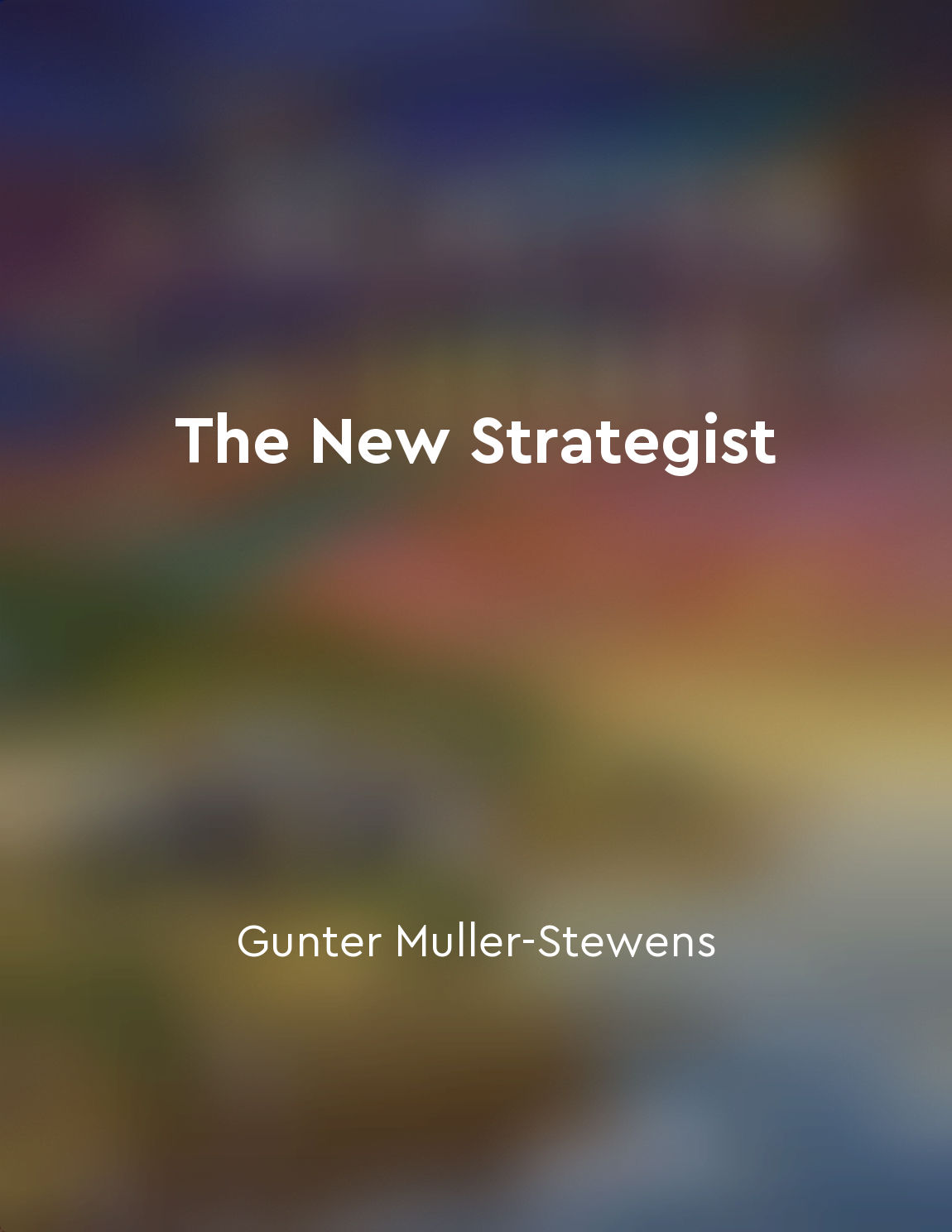Strategic decisionmaking involves weighing risks and rewards from "summary" of The New Strategist by Gunter Muller-Stewens
Strategic decision-making is a critical aspect of leading an organization towards success. It involves analyzing the risks and rewards associated with different options before making a choice. This process requires a deep understanding of the potential outcomes of each decision and the ability to assess the likelihood of success or failure. When weighing risks and rewards, it is essential to consider both short-term and long-term implications. Short-term gains may be tempting, but they could lead to long-term consequences that outweigh the initial benefits. On the other hand, taking calculated risks can sometimes result in substantial rewards that propel the organization forward. In today's fast-paced and uncertain business environment, the ability to make strategic decisions that balance risks and rewards is more crucial than ever. Leaders must be willing to take calculated risks while also being prepared to mitigate potential downsides. This requires a combination of analytical thinking, intuition, and a willingness to adapt to changing circumstances. Successful strategic decision-making also involves considering the broader context in which the organization operates. External factors such as market trends, competitive dynamics, and regulatory changes can all impact the risks and rewards associated with a particular decision. By taking a holistic view of the situation, leaders can make more informed choices that align with the organization's goals and values.- Strategic decision-making is about finding the right balance between risk and reward. By carefully weighing the potential outcomes of different options and considering the broader context in which decisions are made, leaders can steer their organizations towards sustainable success. This requires a combination of foresight, courage, and a willingness to embrace uncertainty.


